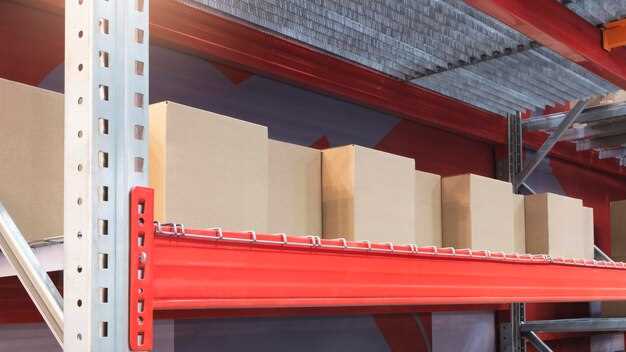
When it comes to enhancing your ATV experience, the importance of efficient storage solutions cannot be overstated. Whether you’re heading out for a weekend adventure or need to transport gear for tasks around the farm, having the right equipment can make all the difference. This guide will provide step-by-step instructions and essential tips for installing storage boxes and cargo racks on your ATV, ensuring you have the space needed to carry all your crucial gear.
ATVs are versatile vehicles designed for rugged terrain, but they often lack sufficient storage options. By adding cargo racks and storage boxes, you can optimize your ATV for various situations, whether it be recreational riding, work purposes, or hauling equipment. This article will cover various types of storage solutions available, how to choose the right ones for your needs, and the installation process to make your ATV more functional and capable.
Equipping your ATV with proper storage gear not only increases its utility but also enhances safety and convenience during your outings. From securing tools and supplies to carrying personal items, the right installation techniques will help you maximize the potential of your vehicle. Let’s dive into the world of ATV storage boxes and cargo racks, where functionality meets adventure.
Choosing the Right Storage Boxes for Your ATV Setup

Selecting the perfect storage boxes for your ATV can significantly enhance your outdoor experience. With various options available, it’s essential to consider the specific gear you plan to transport. Start by assessing the type of activities you intend to engage in, whether it’s off-roading, camping, or hauling tools.
Focus on the size and capacity of the storage boxes. Ensure that they can accommodate your gear without overcrowding. Storage boxes that are too small may leave essential items behind, while excessively large boxes can add unnecessary weight and complicate your ATV’s balance.
Material quality is another crucial aspect. Look for boxes constructed from durable, weather-resistant materials. This ensures that your gear remains protected from the elements during transport. Additionally, consider whether you need features like locking mechanisms for security, especially if you’re storing valuable equipment.
Compatibility with your specific ATV model is vital. Some storage boxes are designed to fit certain brands or models, so verify compatibility to avoid installation issues. Proper mounting systems are also important; make sure that the boxes can be securely attached to your ATV to prevent shifting or detachment during use.
Lastly, evaluate the ease of access. Ideally, you want a storage solution that allows you to quickly retrieve your gear without hassle. Features like hinged lids or drawers can streamline the process, making your outdoor adventures more efficient and enjoyable.
Step-by-Step Instructions for Mounting Cargo Racks

Mounting a cargo rack on your ATV is a straightforward process that enhances your vehicle’s ability to carry gear. Follow these detailed steps to ensure a secure installation.
Step 1: Gather Your Tools
Before starting, collect all necessary tools. You typically need a set of wrenches, screwdrivers, and the mounting hardware provided with your cargo rack. Having everything on hand will streamline the process.
Step 2: Prepare the ATV
Ensure your ATV is on a flat surface and turned off. Clean the area where the cargo rack will be installed, removing any dirt or debris that could interfere with the mounting process.
Step 3: Align the Cargo Rack
Position the cargo rack over the designated mounting area on your ATV. Align the holes in the rack with the mounting points on your vehicle. This may require a second person to hold the rack in place while you work.
Step 4: Insert Mounting Hardware
Start inserting the provided screws or bolts into the aligned holes. Make sure each piece fits correctly and securely. Do not fully tighten any fasteners at this point, as this will allow for adjustments.
Step 5: Check Level and Adjust
With all screws in place, ensure the cargo rack is level. Adjust the positioning if necessary by loosening the screws slightly. Once it is level, recheck the alignment of the holes before proceeding to tighten.
Step 6: Tighten the Fasteners
Carefully tighten all screws or bolts using your wrench or screwdriver. Ensure they are secure but avoid over-tightening, which can damage the equipment or the ATV.
Step 7: Final Inspection
Conduct a thorough inspection of the installation. Verify all hardware is tight and the rack is stable. Make sure there are no obstructions that could interfere with the operation of your ATV.
Step 8: Load Your Gear
Once the cargo rack is securely mounted, you can begin loading your gear. Distribute the weight evenly to maintain balance and stability during your ride.
Following these steps will ensure a safe and effective installation of your cargo rack, enhancing your ATV’s cargo-carrying capabilities.
Organizing Gear for Optimal Use of Space
When it comes to maximizing the utility of your ATV, organizing gear efficiently is paramount. The right storage solutions will not only keep your equipment secure but also ensure quick access when needed. Start by categorizing your gear into essential groups, such as tools, first-aid supplies, and recreational items. This categorization will help you determine the best storage options.
Invest in durable storage boxes that can withstand the rigors of outdoor use. These boxes should fit neatly in designated spaces on your ATV, such as behind the seat or on the cargo rack. Consider using modular storage solutions that allow for easy reconfiguration based on the type of adventure you are planning. For example, if you’re heading into rugged terrain, prioritize tools and recovery gear; for a leisurely day out, focus on picnic supplies and recreational gear.
When installing cargo racks, ensure they are positioned to optimize space without obstructing your view or affecting the ATV’s handling. Utilize vertical space by adding side racks or attaching storage bags that can hold smaller items. Properly securing gear with straps or bungee cords will prevent movement during transit, keeping everything in its designated spot.
Lastly, regularly assess and reorganize your storage. As you acquire new gear or your activities change, what worked before may not suit your current needs. A well-organized storage system for your ATV gear not only enhances accessibility but also contributes to a safer and more enjoyable riding experience.
 Skip to the content
Skip to the content 